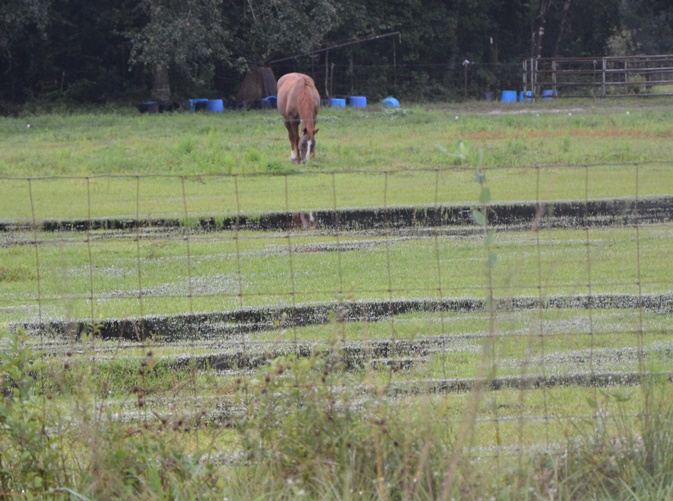
The rainy conditions have produced wet pastures and paddocks. The occurrence of thrush, a hoof disease of horses, is on the rise.
The plentiful rain fall in recent months has a number of benefits. Among these is ample moisture for forage production in pastures and paddocks. Unfortunately, too much of a good thing (rainwater) can be detrimental, in this case, to the equine population.
Thrush, the bacterial infection which occurs on horses’ hooves, is common during excessively wet periods. The cause is Fusobacterium Necrophorum which occurs naturally in the environment. The damp and muddy grounds combined with manure will create the ideal conditions for this bacterium to flourish.
The symptoms are usually first identified when cleaning the animal’s feet. A strong offensive odor will originate from the infected hoof. The infected area will be black in color and will easily disintegrate when scraped with a hoof pick. The frog portion of the hoof is frequently the starting point of this problem. The frog is on the hoof’s underside and covers about a quarter of the foot.
The best treatment is cleanliness. Pick the hooves twice daily and keep stalls clean and dry, but a commercial thrush treatment may still be necessary. Keep the affected animal away from wet grazing areas. If treated early and managed properly, the horse will recover with no lasting ill effects.
—
For more information, us the following link to this Michigan State publication:
Preventing and Treating Thrush in Horses
- The Federal Reserve’s Beige Book Outlook for the Near Future - August 9, 2019
- Creeping Indigo: Get Ahead of the Problem Now - March 1, 2019
- Horse Hooves Need Extra Care in Wet Pastures - February 15, 2019
